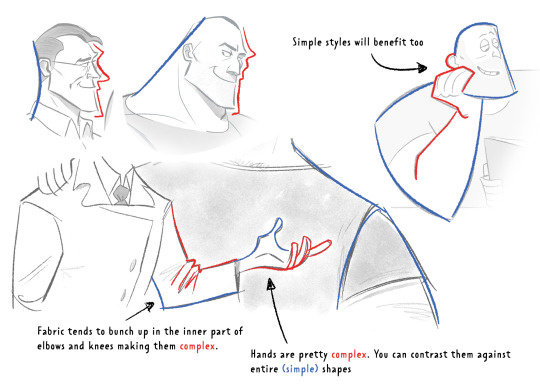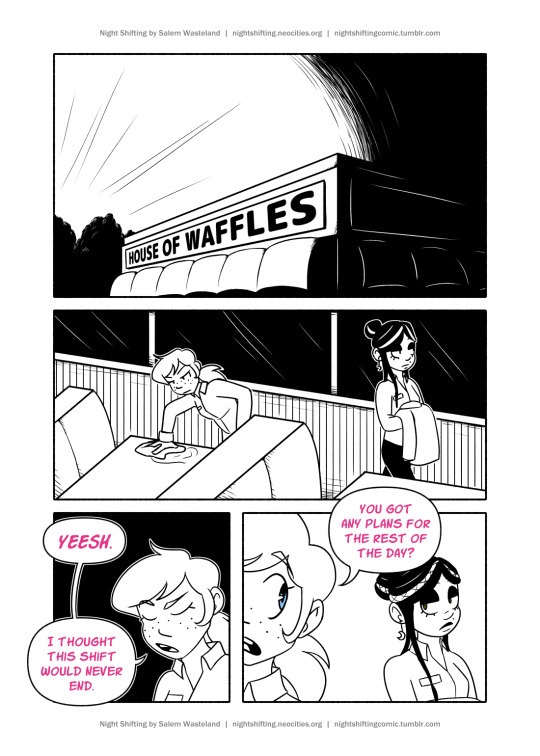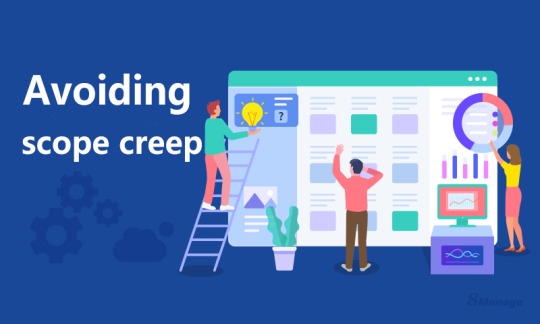#Strict Workflow
Explore tagged Tumblr posts
Text
I need to increase my efficiency fr the vash art took a total of a little over 24 hours and that’s mostly because I spent forever futzing around with everything
2 notes
·
View notes
Note
What’s your thoughts visually on how bots habsuites/ quarters look like? And would they differ between frame types ? As prime big lol Wish we got some media on it :0
Hmm well I do imagine things would differ wildly between each continuity. However, some generalizations might be the following:
Autobots as a whole: Generally speaking, I do imagine the Autobots have habs that match their size and their rank. Rank and file soldiers are bunked together in rooms filled with recharging stations crammed shoulder to shoulder. Most don't mind since they are all together and it's not as if they have anything of their own anyway more often than not. Those further up the chain of command get rooms with less people in them until they finally get a roommate or possibly, if they are super duper special, their very own closet sized space. Actual berths are reserved for those with rooms big enough for them. Most just use recharging stations since it's generally more useful to making the most of a space.
Rank and file soldiers: The average soldier is bunked shoulder to shoulder with his or her comrades. They are each given a standing recharge station boxed right up against everyone else's unless they have an injury which warrants the usage of the handful of berths given to soldiers lower on the chain of command. Generally, such soldiers are kept in huge facilities meant to keep everyone safe and secure rather than comfort them. As such, decoration simply does not happen unless the military position a soldier is stationed at is more permanent. In which case, the soldier might paint their station with odd doodles, splotches of color, or if they are lucky enough to find some, they might slap some stickers on it.
Company commanders and the like: Directly above regular soldiers, various commanders of lower rank get bunked together as well, but they are given a tad more room. This is not a privilege as one might expect, but an actual necessity. Commanders can get called on at any time, and each of them need a little more room to work on reports and whatnot since there simply is not enough space to give each of them an office of their own. As such, their stations are a little farther apart, and between them are their personal effects and maybe something to play the part of a makeshift desk if need be. Decoration is the same as regular soldiers, with the possible addition of medallions, the odd set of fairy lights if one gets lucky, or even a poster or two.
Lieutenants and up: Now this is when a bot would start getting their own space, kind of. Bots of this rank are still bunked with a buddy or two, but they are actually issued rooms in order to supply them with the privacy needed to handle sensitive data. They also get actual berths (which can and often do double as desks). Getting a room means a bot can do almost whatever they like to decorate so long as it sort of aligns with military orders. Most often, lieutenants and the like decorate with weapons on the walls, trophies, artwork, or even murals. It depends on his strict the command center is.
Generals and Prime's Inner Circle: Inner circle bots get privileges, and one of those is a private room. A bot can do whatever the heck they want with their space so long as it doesn't disrupt workflow and the like. Decoration depends entirely on whoever owns the hab. In the case of Ultra Magnus, he lives in a mountain of datapads. Ratchet keeps mementos but will die before admitting it. Jazz has what few instruments he's managed to save. Ironhide decked his room with weapons... the list goes on. There are no limits for the most part. Comes with being constantly under threat of being assassinated.
Prime: Technically, he should be living in a high end facility, never to dirty his digits. But because this is Optimus Prime, he tends to wander. He rests wherever there is a free space and will gladly rest with the soldiers without a worry in the world. The only reason he has a hab at all is for the sake of morale amongst the troops. Although more often than not, it doubles as an extra room for injured troops in need of protection.
Not sure if this is what you wanted anon, but these are my thoughts!
133 notes
·
View notes
Note
I just want to say I love how you do your lineart, it looks so good! ahhhhhhhh!!
I'm gathering a lot of advice about the topic of lineart and I just wanna know how you get it to look like that? My line weight is getting better but the drawing itself just comes out a bit.. weird.
Thank you so much! Lineart is probably the thing I've been working hardest on as I am not a lineartist (and still struggle a lot) but it's something I really need to get better at for my job. UM there's honestly so much that could be said on the topic of lineart. Big things for me are:
Weight -> Use line weight (aka thickness) to describe form, lighting, contact and scale. Thick lines imply shadow, contact and nearness-to-camera. Thin lines imply tension, recession and light.


Straights vs Curves -> Use straight lines against curved ones for maximum interest. This is partly a character design thing but as we're using lines to describe our characters it's worth mentioning :)

Complex vx Simple -> Use complex lines against simple. Faces are always complex so therefore the backs of heads should always be simple. Chests are quite complex so backs should be simple. Dorsal sides of the arms are complex (Delt, tricep, bicep) whilst the ventral side is more simple (tricep...mainly) etc.

'Think in Ink' -> Lower your sketch layer almost to 0% opacity so you're not getting hung up on how nice/energetic your sketch look and instead are approaching the piece from an ink mindset. BUT it's digital! So if there's something in your sketch that you like just bring it forward (copy and paste) into your ink layer. I sketch and ink with the same brush so I can use this workflow
'Confidence' -> small hesitant feathery lines will look nervous compared to big swooping lines. Less is always more. I'll redraw arms/limbs until I can get the appearance that it was done in one brush stroke. Again it's digital so you can erase to cheat this look : )


MISC 01: I always hear 'draw from the shoulder'........meh............it's digital so draw from your wrist...it's fine honestly. If we were working at A1 in a life drawing class then we could get some shoulder action going but most of us are hunched over 16inch tablets. I think this advice aims to pull people away from feathery-nervous lineart honestly which you can improve on without relearning how to draw from your shoulder.
MISC 02: For a 'smoother' look do your lineart at a larger canvas size than you need. Once I'm happy with a sketch I usually double the canvas size and do my lineart then.
MISC 03: In PS (at least) anti-aliasing goes funny at any zoom level that isn't in the 5 times table. So try not to look at your canvas when you're zoomed in to 87% or 71.39% or something crazy. Just stick to 25%, 50%, 75% and 100% if possible.
UNFORTUNATE TRUTH: Lineart is incredibly based on raw draughtmanship I've discovered. When you're working with colour you can hide a lot in rendering (shadows, highlights) or post-processing (depth of field) but in lineart all your mistakes are just...there for people to see. There's ways round this...which I use A LOT. 'Flourishes' (I use 'flourishes' to mean over-confident lineart where it veers particuarly thick or particuarly thin in contrast to your approach in the rest of the image) can sort of trick people into thinking you're more confident about an area than you actually are.

As well as leaving 'breathing room' within your lineart instead of actually...resolving the area. I do this the most around the face and hands.

Hopefully some of this helps? Honestly there's a lot of deep dives that could be done into indivudal things and there's also the massive caveat that all of these are 'guidelines' and not strict rules. I also favour a more...concept-arty? animation-y? storyboard-y? look to my lineart which favours flourishes and breathing room for a incomplete/work-in-progress feel which would make methodical colouring (ie: for a comic or something) a pain.
Keep up pratice is the main thing and doing studies of artists who you like that have great lineart - you'll pick up draughtmanship skills along with the lineart studies. Here's some of my lineart from a year or two ago...it varies between very 'standardised' (which makes it difficult to read volumes and to be honest, it's boring) and 'TOO EXCITING' (which...also makes it difficult to read volumes and for the eye to rest).

I'd like to share my brushes at some point as I've found 3 that I really like and use for everything more or less. I discovered that a shocking low amount of people use PS on tumblr (shocking to me I guess as i'm so used to PS being the standard) and everyone seems to use Procreate or Clip Studio Pro...so I want to check that the brushes are Procreate compatible at least before I share!
#sorry if none of this makes sense. im on day TWO of a hangover...kill me now#asks#art tutorial#tutorial
781 notes
·
View notes
Note
Rachel's art regression actually makes me so sad because yeah she always had problems with anatomy but at least her style used to have personality back then
It's actually so fascinating to look at her older art because on the one hand, to her credit, she was INCREDIBLY prolific, she made SO MUCH STUFF to the point that we're STILL finding new stuff all the time, it's actually really impressive; but on the other hand, she also clearly didn't really have a focused direction, she was kind of just trying different things waiting to see what would stick, and eventually LO was what won the lotto. But unlike previous works where she could pick them up and drop them at her own time, she was contractually obligated to LO and it forced her to meet crazy strict deadlines, so I think in a way (at least in my opinion from what I've been able to glean looking at her work from the past several years) she almost lost a lot of what she was capable of doing back then because she proceeded to spend all of her time for YEARS working on LO.
I do think she'd be fully capable of returning to that older art style, but the reality is that that style also, like LO, existed through inconsistency. She was always trying and doing different things and you can tell a lot of it was rooted in both trial and error + indecisiveness. As much as she's talked about "streamlining" the production process of LO in previous interviews, it's also very clear in its inconsistencies - as well as her older work which was also inconsistent, for better and for worse - that she never actually learned how to streamline. Unlike artists who you can at least look at and understand they have a "process" that they follow every single time, she just does not seem to have that.
And that's not necessarily a bad thing, I think it worked well for her when she was doing freelance and standalone illustrations / conceptual art. The "personality" in her work back then was her just messing around with things and doing whatever looked good, and it often paid off through beautiful illustrations and concept designs.
But that sort of approach doesn't work so well when you're trying to do a long-form comic with unique characters and a distinctive art style which is being worked on by multiple different people. Something like LO demands workflow consistency and a production pipeline with steps to follow and standards to practice, and that's not something that Rachel has ever really been good at, even before she started LO.
#ask me anything#anon ama#ama#anon ask me anything#lore olympus critical#lo critical#anti lore olympus
121 notes
·
View notes
Note
Please please please I beg of you. Do you have any speedpaints or could you possibly break down your artistic process for a poor soul like me? I would love nothing more than to do a study of your art. It’s just so beautiful, I’m literally tearing my shirt off. 😫
Ok, keep your shirt on.
As much as I'd like to record my process, I'm so disorganised and inefficient it's practically impossible. I've tried to use CSP's record before, but the file size causes my computer to implode. That being said, I'll try to explain:
1. Preliminary sketch: Figure out the pose/composition/whatever and draw it badly.

2. The real sketch: Look at reference photos and draw it for real this time.

3. Values: For this drawing, I wanted the background to 'peek' through the characters, so I used a large rake brush to fill in the values. I like to try and preserve as much texture as possible for visual interest. I merge the values with my sketch, sometimes I keep an extra sketch layer for insurance. I use this merged layer as a mask down the line.

4. Colours: I wanted this one to be dark blue. There is no strict 'way' to do this, just feel out what looks best to you.

I make a mask of the value/sketch layer here, and add it to all my colour layers so I don't go outside the selection and paint over the gaps. I add local colours with a large soft brush.

5. Painting: I don't know how to go about explaining this step, so here's a small window into my process. It's not a complete timelapse but it's better than nothing (I don't like this drawing anymore, I probably won't finish it).

6. Post-processing: Typically from here it's just tweaking colours, lighting and adding effects to finish up. I haven't finished that drawing, so I'm just going to use my most recent finished drawing to give you an idea of the full process. Again, there's no real method to this, do what you think looks good.
I like to layer textures on top of each other, typically set to Subtract, Divide, Difference or Brightness. Tone curves, colour balancing, overlays, what have you. After that, I merge everything to a new layer and then add effects like chromatic aberration and sharpness (don't skimp on the crunch factor).

I know this isn't super detailed but my process seemingly changes with every drawing, I like to try new things, I do things out of order, sometimes I don't even use CSP, and my workflow isn't nearly as streamlined as this little guide would have you believe. Cheers.
27 notes
·
View notes
Text
I have an extremely active escapist imagination, always coming up with new stories to vividly daydream into existence, but I've learned to temper it by being very strict on which ideas I actually act upon. No matter how compelling the idea is, sometimes you've got to starve the plot bunnies out.
An example of how my brain's creativity-to-productivity workflow follows.
I believe that you've gotta give the plot bunnies in your head time to thrive or die, not just because you only have so much time in the day and there are better projects worth your time and effort and energy already on the docket, but because when you give an idea time on the shelf and give it some serious thought past the honeymoon phase, that gives you enough time to get exposed to other perspectives and viewpoints which might reveal the flaws of that idea.
For example, I've been dying to do some kind of fan project related to the game "In Stars and Time," because I found it very creatively inspiring, and there are aspects of that game's story and worldbuilding that lure you into speculation like a siren's call.
A plot bunny spawned in my brain almost fully formed, an idea for a fanfictiony prequel that could even be a fan-game, which would allow me to exorcise some headcanons and potent themes about the game's backstory. That plot bunny spawned a number of cool ideas, enough to nearly justify it as a project if I could finally wrangle RPG Maker into not killing all motivation.
But even though this idea created some lovely daydreams and stuck in my head for months on end, it never crossed my very strict threshold for action. Partially because this year I've been focusing on real-life development and improvement, but also because it felt like something about it wasn't coming together.
In the meantime, it's been interesting watching the ISAT fandom develop into their own fan-thoughts and headcanons and perspectives. And as I watched, that idea on the back burner would sometimes get re-inspired almost into action, and sometimes get chipped away by gnawing gut feelings.
Eventually, I realized the problem. Or rather, the realization grew slowly despite my internal denial due to my attachment to the idea. The thing was, my idea ignored several important themes of ISAT that resonate more with other players than they do for me - those themes being erasure of ethnicity and heritage and community, and the psychological impacts of their absence.
Being an ignorant and disabled but otherwise comfortable white American, I can appreciate such themes in a literary sense, and ISAT does an excellent job of putting you in the head of someone facing those challenges, but I don't really feel their impact in the same way as someone might if they're part of a group that has faced marginalization and erasure. And as a result, my little fanfic idea was very USA-coded, completely whitewashing any important themes of ethnicity, and potentially stomping all over the headcanons of anyone who filled in those same gaps with something more meaningful to their life experience.
And so the plot bunny finally died, too fully formed to adapt away from this problem. Its hold on me finally released, and the few good sub-ideas it spawned can be safely recycled towards other projects.
It doesn't really feel like a victory, though, and I still mourn it for all the time I spent daydreaming about it. I still have some of that strong desire to exorcise the creative inspiration ISAT gave me into some kind of tribute, but that idea just didn't pass muster in the end.
But at least I'm thankful for my strict rules about plot bunnies preventing me from acting on it too soon, so that the sunk cost fallacy never had a chance to kick in.
15 notes
·
View notes
Text
The good news is that he found a different job and next week is his last week and I only have to work with him 2 more times and only one of those times will I be alone.
Tech talk and rant below.
But in my opinion, we should have fired him earlier on because two weeks into the season he was unclear of what any of the equipment apart from the camera actually did.
The camera takes the picture.
The lights light the subject.
The computer matches the subject to the picture.
The transmitter connects the camera to the lights wirelessly, so that when you take the picture the lights flash automatically.
The sync cord connects the camera to the computer so that the image is displayed on the screen.
The skyport connects the lights to the computer so that they automatically adjust.
Its just all the electronics going through a circular systems check to make sure they are firing properly and matching it up against our white balance test. I know it sounds complicated, but its literally just a circle.
I understand that this can be complicated for someone who is used to 'click button, get picture.' But having the same problems over and over again because he doesn't understand the proper procedure and doesn't look at the checklist that he swears he never received even though I gave him my laminated copy and having to fix all of the problems that are literally because he didn't respect me enough to listen when I explained it to him cuts into the time that could be spent getting ready.
Now we are a month and a half in and on Tuesday he asked me what the skyport does.
If your skyport fails, you have to adjust your lights manually.
Therefore... skyport makes the computer talk to your lights.
And every time something fails, he says 'this would be so much easier without computers' and I'm like. Fine. Okay? Try to match 900 student names to photos without a computerized indexing system. Try getting the light to be consistent without a startup exposure test.
No sense of troubleshooting, which isn't very difficult. If something isn't right, restart the computer and try again. If you get a repeat of the problem, call Freddie from IT. But usually, a reboot fixes most problems.
But then he started breaking the rules, and in a very intentional way. Like at first it was 'oh I didn't know I wasn't supposed to show them the photo' even though we went over this in training. Then it was 'well, I'm not supposed to show you the photo but if you come back here while I'm adjusting my lights I can't stop you.'
At first it was 'hey, Jay, remember what Freddie said about the no-touch policy during training? I know you want to make the kids like you, but its very unprofessional to ask them for a high five, especially since these schools are very strict about their own no-touch policies and also did we not just go through a wholeass pandemic?'
And now students are complaining about him physically adjusting their posture with his hands.
Like... I don't mind bending the rules a little. But before you can bend the rules, you have to understand why the rules are there, so that when they are bent there is a good reason. The rule about showing photos is there to make workflow consistent. The no touch rule is for the safety of ourselves and the students.
But breaking the rules constantly just out of disrespect means that I can't bend them myself. I have to be a hardass. I hate being a hardass. But if I'm not a hardass and someone tells me that he's violating our no-touch policy, the company gets in deep trouble.
Not that he'll ever... ever follow my advice on the subject because as previously mentioned- he respects no one here. He has 15 years experience as a photographer and is too good for this place. Why would he listen to someone under 40 with three years experience dealing with schools?
His pictures aren't even very good. They're average.
Just two more jobs with him and then he's off to do something else and gods I hope he's better at that than he is a school photographer.
94 notes
·
View notes
Text
How Do Healthcare BPOs Handle Sensitive Medical Information?
Healthcare BPO Services

Handling sensitive and personal medical and health data is a top priority in the healthcare industry as it can be misused. With growing digital records and patient interactions, maintaining privacy and compliance is more important than ever and considered to be a tough role. This is where Healthcare BPO (Business Process Outsourcing) companies play a critical role.
As these providers can manage a wide range of healthcare services like medical billing, coding and data collection, claims processing and settlements, and patient on-going support, all while assuring the strict control over sensitive health information is maintained and carried out on the go.
Here's how they do it:
Strict Data Security Protocols -
Healthcare companies implement robust security frameworks to protect patient information and personal details that can be misused. This includes encryption, firewalls, and secure access controls. Only the concerned and authorized personnel can get the access towards the medical records and data, as all our available on the go all data transfers are monitored to avoid breaches or misuse.
HIPAA Compliance -
One of the primary and key responsibilities of a Healthcare BPO is to follow HIPAA (Health regulations policies and acts with standard set regulations). HIPAA sets the standards for privacy and data protection. BPO firms regularly audit their processes to remain compliant, ensuring that they manage patient records safely and legally.
Trained Professionals -
Employees working and the professionals in Healthcare services are trained and consulted in handling and maintaining the confidential data. They understand how to follow the strict guidelines when processing claims, speaking with patients, or accessing records. As this training reduces and lowers down the risk and potential of human error and assures professionalism is maintained at every step.
Use of Secure Technology -
Modern Healthcare BPO operations rely on secure platforms and cloud-based systems that offer real-time protection. Data is stored and collected in encrypted formats and segments, and advanced monitoring tools and resources are used to detect the unusual activity that prevent cyber threats or unauthorized access.
Regular Audits and Monitoring -
Healthcare firms conduct regular security checks and compliance audits to maintain high standards. These assist to identify and address the potential risks at the early stage and ensure all the systems are updated to handle new threats or regulations.
Trusted Providers in Healthcare BPO:
The reputed and expert providers like Suma Soft, IBM, Cyntexa, and Cignex are known for delivering secure, HIPAA-compliant Healthcare BPO services. Their expertise in data privacy, automation, and healthcare workflows ensures that sensitive medical information is always protected and efficiently managed.
#it services#technology#saas#software#saas development company#saas technology#digital transformation#healthcare#bposervices#bpo outsorcing
4 notes
·
View notes
Note
You don't have to answer this at all, just wanted to give some perspective/info from someone who's been doing illustration commissions for about 15 years: in my opinion, it's always better to work backwards from an hourly rate rather than doing value-based pricing.
When working with private individuals as clients, US$30-50/hr is pretty standard for custom freelance stuff depending on experience, but since you're new to commissions I'd recommend offering a discount for the first few slots (both to get things moving, and also to give yourself lower-stakes "training" until you get used to the process—sometimes your workflow will change in ways you didn't expect under the conditions).
Personally, I prefer to offer a fixed quote based on my hourly rate, because that gets any kind of sticker shock out of the way. I estimate the amount of time it'll take me, add ~10% as a buffer, and apply my hourly rate. The fixed quote also gives me a little freedom not to stress out if it's taking more or less time than anticipated; I just make a note for my next quote and adjust accordingly.
The hourly rate might seem high to you, as it often does to people who are used to more traditional salary structures. But keep in mind that as a freelancer, you're also your own admin support: you don't bill for time spent emailing, researching, invoicing, etc. Tax can also get a bit complicated if you start doing a lot of freelance work.
My own base (non-commercial) rate is US$60/hr, because I've been doing this for a very long time. Frankly, the reason I have a lot of long-term repeat clients who pay my rate is because I communicate well and deliver on time. I set out a timeline up front with scheduled check-ins at various stages, and then I stick to that timeline no matter what. As someone who's also hired many freelance artists in the past, I know that reliability will win over genius every single time.
Speaking of timelines, ALWAYS be specific about the number and scope of revisions you offer. Depending on the project, I might phrase it as "2 rounds of revisions, with up to 1 hour of work per round" or similar. I bill anything beyond that scope at a higher hourly rate, usually about US$90/hr, billed by the half-hour. This also gives you leverage to say "Sure, I can add a whole new character and completely change the background; that will take about X hours which will put us into hourly billing territory at X rate." Either they'll back down or you'll be well compensated for the trouble, and most importantly (from a client services perspective) you've not told them no, you've given them options and reminded them what they've already agreed to.
In terms of payment plans, I normally require 50% up front (non-refundable) and 50% on final delivery. Since you haven't yet built up a rep as a commission artist, I recommend a lower up-front rate (maybe 20-30%). I do strongly advise getting SOMETHING up front to lock clients in and make sure they can't completely ditch if something happens. Plus, refusing to pay a small deposit is a major red flag.
I offer a 5% discount for complete payment up front, because it's honestly worth that 5% just to not have to deal with chasing people down and sending invoice reminders and whatnot.
I'm sorry to hear you've been going through such a tough time, and I hope this was helpful and not too overwhelming; it's just stuff I wish someone had told me when I was first starting out, and I think it's important for working artists to share info about business practices. I wasn't strict about a lot of things back then (like number of revisions), and it always ended up coming back to bite me. It might seem counter-intuitive, but I promise that thinking through and setting a lot of rules/boundaries up front will save you a lot of stress and trouble in the end.
I seriously want to thank you for this. It's incredibly informative not just for me but I'm sure other start out artists too. You've gone over things that I'd have no idea to do, thank you.
I'm certainly looking into how to pay tax as being in the UK I've never had to work that out before as we have it done for us in most jobs. So that would have been something I'd have forgotten about and it's not something you want to miss. I definitely have to time myself working as I don't know how long I take as I've never thought about that either. I just know I'm slow. It's interesting to see what you'd charge hourly as I see a lot of fan commissions having a low fixed rate depending on what you offer. So definitely have to look whether to offer that or like you suggest a more freelance rate of pay. I'll admit US$30-50/hr made me gasp but that's because I'm used to working for UK minimum wage (roughly $13 a hr) so that seems a lot to me. Gives me something to think about. Though I worry about pricing people out to begin with what with being quite slow and a nobody. And yes! Never forget about getting a deposit. I learnt that the bad way decades ago when I did try to do a commission and was never paid. That's what made me nervous to even begin as I can be a pushover. So need to be more strict in what I can offer and of course revise too.
Seriously thank you this is so helpful. Like you say there's so much people don't share about getting into freelance and commission work. Getting that step up, even if it's me doing it, is something I've no idea how to even start on. I get people saying why aren't you working in art? But my answer is always 'how?' It's something no one's told me about. How to sell yourself and your work. Even commission work confused me. So please don't worry this is beyond helpful and I'm very grateful for you taking your time to help me. It's been a very rough few months but I'm trying to stay positive. This may help me while I find work. Much love, Lucy 💖
60 notes
·
View notes
Text
Cloud Computing: Definition, Benefits, Types, and Real-World Applications
In the fast-changing digital world, companies require software that matches their specific ways of working, aims and what their customers require. That’s when you need custom software development services. Custom software is made just for your organization, so it is more flexible, scalable and efficient than generic software.
What does Custom Software Development mean?
Custom software development means making, deploying and maintaining software that is tailored to a specific user, company or task. It designs custom Software Development Services: Solutions Made Just for Your Business to meet specific business needs, which off-the-shelf software usually cannot do.
The main advantages of custom software development are listed below.
1. Personalized Fit
Custom software is built to address the specific needs of your business. Everything is designed to fit your workflow, whether you need it for customers, internal tasks or industry-specific functions.
2. Scalability
When your business expands, your software can also expand. You can add more features, users and integrations as needed without being bound by strict licensing rules.
3. Increased Efficiency
Use tools that are designed to work well with your processes. Custom software usually automates tasks, cuts down on repetition and helps people work more efficiently.
4. Better Integration
Many companies rely on different tools and platforms. You can have custom software made to work smoothly with your CRMs, ERPs and third-party APIs.
5. Improved Security
You can set up security measures more effectively in a custom solution. It is particularly important for industries that handle confidential information, such as finance, healthcare or legal services.
Types of Custom Software Solutions That Are Popular
CRM Systems
Inventory and Order Management
Custom-made ERP Solutions
Mobile and Web Apps
eCommerce Platforms
AI and Data Analytics Tools
SaaS Products
The Process of Custom Development
Requirement Analysis
Being aware of your business goals, what users require and the difficulties you face in running the business.
Design & Architecture
Designing a software architecture that can grow, is safe and fits your requirements.
Development & Testing
Writing code that is easy to maintain and testing for errors, speed and compatibility.
Deployment and Support
Making the software available and offering support and updates over time.
What Makes Niotechone a Good Choice?
Our team at Niotechone focuses on providing custom software that helps businesses grow. Our team of experts works with you throughout the process, from the initial idea to the final deployment, to make sure the product is what you require.
Successful experience in various industries
Agile development is the process used.
Support after the launch and options for scaling
Affordable rates and different ways to work together
Final Thoughts
Creating custom software is not only about making an app; it’s about building a tool that helps your business grow. A customized solution can give you the advantage you require in the busy digital market, no matter if you are a startup or an enterprise.
#software development company#development company software#software design and development services#software development services#custom software development outsourcing#outsource custom software development#software development and services#custom software development companies#custom software development#custom software development agency#custom software development firms#software development custom software development#custom software design companies#custom software#custom application development#custom mobile application development#custom mobile software development#custom software development services#custom healthcare software development company#bespoke software development service#custom software solution#custom software outsourcing#outsourcing custom software#application development outsourcing#healthcare software development
2 notes
·
View notes
Text

















Night Shifting - Chapter 1 - The Wolf
Site Link (uncensored) || Archive
Reposting chapter 1 in a single post to match how I plan to release future chapters. Also because I feel like it's way easier to read it this way.
You may also notice that the text is now in colour and that there is limited colour on some pages. Future pages will also use screentones, but I didn't add them here retroactively bc of how I illustrated some of these panels. These were all things I considered doing from the start, but was worried for how much time they would take me, so I had decided to work in strict b&w initially, but since then I've managed to incorporate them into my workflow without much extra effort, so expect them going forward.
Chapter 2 is still in progress and looks like it will probably be out in April. I'm also working on a little bit of bonus material that I'll post here and on the website!
#Night Shifting#Night Shifting update#<- sort of#comic#webcomic#webcomics on tumblr#original comic#indie comic#artists on tumblr#werewolves#vampires#witches#lgbt#queer#gay#cw gore#cw animal death#comics on tumblr
18 notes
·
View notes
Text

AI’s Role in Business Process Automation
Automation has come a long way from simply replacing manual tasks with machines. With AI stepping into the scene, business process automation is no longer just about cutting costs or speeding up workflows—it’s about making smarter, more adaptive decisions that continuously evolve. AI isn't just doing what we tell it; it’s learning, predicting, and innovating in ways that redefine how businesses operate.
From hyperautomation to AI-powered chatbots and intelligent document processing, the world of automation is rapidly expanding. But what does the future hold?
What is Business Process Automation?
Business Process Automation (BPA) refers to the use of technology to streamline and automate repetitive, rule-based tasks within an organization. The goal is to improve efficiency, reduce errors, cut costs, and free up human workers for higher-value activities. BPA covers a wide range of functions, from automating simple data entry tasks to orchestrating complex workflows across multiple departments.
Traditional BPA solutions rely on predefined rules and scripts to automate tasks such as invoicing, payroll processing, customer service inquiries, and supply chain management. However, as businesses deal with increasing amounts of data and more complex decision-making requirements, AI is playing an increasingly critical role in enhancing BPA capabilities.
AI’s Role in Business Process Automation
AI is revolutionizing business process automation by introducing cognitive capabilities that allow systems to learn, adapt, and make intelligent decisions. Unlike traditional automation, which follows a strict set of rules, AI-driven BPA leverages machine learning, natural language processing (NLP), and computer vision to understand patterns, process unstructured data, and provide predictive insights.
Here are some of the key ways AI is enhancing BPA:
Self-Learning Systems: AI-powered BPA can analyze past workflows and optimize them dynamically without human intervention.
Advanced Data Processing: AI-driven tools can extract information from documents, emails, and customer interactions, enabling businesses to process data faster and more accurately.
Predictive Analytics: AI helps businesses forecast trends, detect anomalies, and make proactive decisions based on real-time insights.
Enhanced Customer Interactions: AI-powered chatbots and virtual assistants provide 24/7 support, improving customer service efficiency and satisfaction.
Automation of Complex Workflows: AI enables the automation of multi-step, decision-heavy processes, such as fraud detection, regulatory compliance, and personalized marketing campaigns.
As organizations seek more efficient ways to handle increasing data volumes and complex processes, AI-driven BPA is becoming a strategic priority. The ability of AI to analyze patterns, predict outcomes, and make intelligent decisions is transforming industries such as finance, healthcare, retail, and manufacturing.
“At the leading edge of automation, AI transforms routine workflows into smart, adaptive systems that think ahead. It’s not about merely accelerating tasks—it’s about creating an evolving framework that continuously optimizes operations for future challenges.”
— Emma Reynolds, CTO of QuantumOps
Trends in AI-Driven Business Process Automation
1. Hyperautomation
Hyperautomation, a term coined by Gartner, refers to the combination of AI, robotic process automation (RPA), and other advanced technologies to automate as many business processes as possible. By leveraging AI-powered bots and predictive analytics, companies can automate end-to-end processes, reducing operational costs and improving decision-making.
Hyperautomation enables organizations to move beyond simple task automation to more complex workflows, incorporating AI-driven insights to optimize efficiency continuously. This trend is expected to accelerate as businesses adopt AI-first strategies to stay competitive.
2. AI-Powered Chatbots and Virtual Assistants
Chatbots and virtual assistants are becoming increasingly sophisticated, enabling seamless interactions with customers and employees. AI-driven conversational interfaces are revolutionizing customer service, HR operations, and IT support by providing real-time assistance, answering queries, and resolving issues without human intervention.
The integration of AI with natural language processing (NLP) and sentiment analysis allows chatbots to understand context, emotions, and intent, providing more personalized responses. Future advancements in AI will enhance their capabilities, making them more intuitive and capable of handling complex tasks.
3. Process Mining and AI-Driven Insights
Process mining leverages AI to analyze business workflows, identify bottlenecks, and suggest improvements. By collecting data from enterprise systems, AI can provide actionable insights into process inefficiencies, allowing companies to optimize operations dynamically.
AI-powered process mining tools help businesses understand workflow deviations, uncover hidden inefficiencies, and implement data-driven solutions. This trend is expected to grow as organizations seek more visibility and control over their automated processes.
4. AI and Predictive Analytics for Decision-Making
AI-driven predictive analytics plays a crucial role in business process automation by forecasting trends, detecting anomalies, and making data-backed decisions. Companies are increasingly using AI to analyze customer behaviour, market trends, and operational risks, enabling them to make proactive decisions.
For example, in supply chain management, AI can predict demand fluctuations, optimize inventory levels, and prevent disruptions. In finance, AI-powered fraud detection systems analyze transaction patterns in real-time to prevent fraudulent activities. The future of BPA will heavily rely on AI-driven predictive capabilities to drive smarter business decisions.
5. AI-Enabled Document Processing and Intelligent OCR
Document-heavy industries such as legal, healthcare, and banking are benefiting from AI-powered Optical Character Recognition (OCR) and document processing solutions. AI can extract, classify, and process unstructured data from invoices, contracts, and forms, reducing manual effort and improving accuracy.
Intelligent document processing (IDP) combines AI, machine learning, and NLP to understand the context of documents, automate data entry, and integrate with existing enterprise systems. As AI models continue to improve, document processing automation will become more accurate and efficient.
Going Beyond Automation
The future of AI-driven BPA will go beyond automation—it will redefine how businesses function at their core. Here are some key predictions for the next decade:
Autonomous Decision-Making: AI systems will move beyond assisting human decisions to making autonomous decisions in areas such as finance, supply chain logistics, and healthcare management.
AI-Driven Creativity: AI will not just automate processes but also assist in creative and strategic business decisions, helping companies design products, create marketing strategies, and personalize customer experiences.
Human-AI Collaboration: AI will become an integral part of the workforce, working alongside employees as an intelligent assistant, boosting productivity and innovation.
Decentralized AI Systems: AI will become more distributed, with businesses using edge AI and blockchain-based automation to improve security, efficiency, and transparency in operations.
Industry-Specific AI Solutions: We will see more tailored AI automation solutions designed for specific industries, such as AI-driven legal research tools, medical diagnostics automation, and AI-powered financial advisory services.
AI is no longer a futuristic concept—it’s here, and it’s already transforming the way businesses operate. What’s exciting is that we’re still just scratching the surface. As AI continues to evolve, businesses will find new ways to automate, innovate, and create efficiencies that we can’t yet fully imagine.
But while AI is streamlining processes and making work more efficient, it’s also reshaping what it means to be human in the workplace. As automation takes over repetitive tasks, employees will have more opportunities to focus on creativity, strategy, and problem-solving. The future of AI in business process automation isn’t just about doing things faster—it’s about rethinking how we work all together.
Learn more about DataPeak:
#datapeak#factr#technology#agentic ai#saas#artificial intelligence#machine learning#ai#ai-driven business solutions#machine learning for workflow#ai solutions for data driven decision making#ai business tools#aiinnovation#digitaltools#digital technology#digital trends#dataanalytics#data driven decision making#data analytics#cloudmigration#cloudcomputing#cybersecurity#cloud computing#smbs#chatbots
2 notes
·
View notes
Text
Hello everyone!! We're looking to pick up possibly one or two mods to help with the workload, if anyone is interested! It's been a bit difficult to maintain 13 posts/day between the two of us, and with enough help, we should be able to maintain that queue rate or maybe even increase it a little! There's also some things that would be really nice to do if all of the time we spent dedicated to the blog wasn't just making sure the queue didn't empty out haha
If you're interested, please send an ask off-anon, and I'll DM you from my main when I can! If you don't allow DMs from your main, you can also give a different way to contact you as well in your ask! (Like the URL of a sideblog with DMs open!) Thank you !!
More info under the cut!!
The main modding responsibilities include:
Gathering album information into the planning spreadsheet.
Taking that information and drafting the posts to queue them.
Less importantly, helping keep track of links for posted polls and copying over the poll results.
These can largely be completed independently, aside from any obvious ordering restrictions (can't queue a post if you don't have the data put together), so if, for any reason, you're only able to do one of the first two on a temporary or even permanent basis, it would still be a lot of help.
In terms of technological requirements, all information can be accessed on websites free-of-charge, two require a (free) account to get access to the album images, and everything can be done strictly in-browser if needed. We do use Google Sheets for the planning sheet, but I don't think you need a Google account to edit/access it. I do not think this is something that is reasonable to do on mobile, so you would need access to a desktop/laptop computer.
I think things can be made considerably easier if you can use some non-browser programs. I personally use a Windows 10 computer + Firefox for my own workflow, but things aren't impossible without it for sure! There's always more than one way to do things. I have no idea what potential difficulties may occur for someone who is a Mac + Safari user, for instance. Oh! And in terms of communication, Discord is best, so it would be helpful if that's something you use as well!
Also we're all here to have fun so like this isn't a job much less a role with strict expectations, so it doesn't have to be like a primary responsibility for you or anything like that!
Also apologies if I take a bit to get back to anyone who does send a message! I'm multitasking between my job and some other obligations so I might not see any notifications right away, and I need to coordinate adding any new mods with my co-mod so there might be a bit of waiting involved unfortunately!! Thank you so much to anyone who reaches out though !!
20 notes
·
View notes
Text
AITHEMIS: A New Way Of Enhancing Legal Practice in “AI” Way

Is AI a legal threat or a helpful tool? Is it replacing or altering the work of lawyers? You might be surprised by the response.
AI is now a quiet participant in the dance of existence. After initially being reluctant to take the initiative, it now easily guides us through its complexity. It helps us with things we used to think people could only do.
It can change the legal sector, including law firms, in-house attorneys, legal operations, and law schools.
AI is a potent instrument in the legal field that enhances rather than replaces human skill. It increases productivity and offers instant access to large databases, a document visualizer, and a case summarizer, which can help contract review in a few minutes.
But a human touch is still necessary for creativity, nuance, and comprehension of human settings. We should consider AI a friend rather than an adversary attempting to supplant humanity. Many of our problems can be solved by AI as a collaborator, which includes:
Review and Analysis of Documents Artificial intelligence (AI) technologies save time in case law research, contract analysis, and due diligence by quickly scanning hundreds of legal documents and finding relevant information.
Predictive analytics AI can predict legal outcomes by examining past cases. This allows lawyers to make better arguments and advise clients, enhancing strategy and decision- making.
Legal Studies AI tools that efficiently scan legal literature and rulings expedite research, and lawyers can focus. These technologies allow them to retrieve relevant content and concentrate on more crucial tasks quickly.
Contract Management AI-assisted contract management solutions reduce turnaround time and legal problems by accurately drafting, reviewing, and managing contracts while identifying risks and guaranteeing regulatory compliance.
Client Communication & Chatbots AI-driven chatbots respond to client questions and offer updates, enhancing client involvement and freeing legal professionals to focus on intricate case details. Therefore, AI is more likely to assist legal teams in keeping more work in-house than replacing positions. As a result, these teams can more carefully choose which tasks to outsource.
In other words, AI can free experts to concentrate on more creative and intellectually stimulating work — the kind of work that first attracted them to the legal field. One of the most significant effects of AI on the legal sector will probably be these procedures, which can benefit law firms or internal legal departments, as well as the clients and businesses they assist.
AI is having a truly remarkable and revolutionary impact on the legal industry. Law Firm AI Software and AI Case Management System tools are just two examples of how technology may modernize law businesses, promote growth, and enhance client services — it’s not just about automating work.
It is essential to have a reliable tool. The AI they employ must produce accurate and legally binding records, be based on trustworthy legal sources, and indicate where its data originates.
These are the few things to Take Into Account When Collaborating with a Trustworthy AI:
Does the AI platform for legal case summaries work well with your workflow, and is it compatible with your current legal applications?
Does it have the capability to meet legal demands, such as automated case management software?
Does the user interface guarantee that legal professionals can easily use it?
Does the supplier protect sensitive legal data by adhering to strict security and privacy standards?
Can AI be expanded to meet upcoming legal issues and technological advancements?
These factors must be considered when choosing AI for legal work. The quick adoption of AI to automate legal documents evidences a notable trend toward more precise and effective legal processes. In a time when time is of the essence, and legal difficulties are becoming more widespread, people who use and adapt to AI have a better chance of success.
The future of law is not about humans vs. AI but rather about how we can employ both to improve client service and build a more accessible and effective legal system.
With Aithemis, incorporating AI into law is not merely a trend but a revolution in law practice in the twenty-first century.
___________________________________
Follow Aithemis on these online channels.
Website: www.aithemis.ai
Blogs: www.aithemis.ai/blogs
Instagram: https://www.instagram.com/aithemis.ai
LinkedIn: https://www.linkedin.com/company/aithemis
2 notes
·
View notes
Text
BBMCT: Begin New Medical Research at AIIMS Hospital

The world of clinical research is constantly evolving, offering new treatments, therapies, and medical innovations that have the potential to change the course of healthcare. British Biomedicine Clinical Trials (BBMCT), in partnership with AIIMS Hospital, stands as a pillar of excellence in the field of advanced clinical research. Known for its state-of-the-art facilities, skilled management, and diverse patient access, BBMCT ensures that cutting-edge medical breakthroughs are brought to life efficiently and ethically. In this article, we explore the unique advantages of collaborating with BBMCT for your clinical research needs.
## Advanced Research Facilities Available
AIIMS Hospital, one of India’s premier medical institutions, provides unparalleled infrastructure and resources for clinical trials. BBMCT leverages these advanced facilities to offer a wide range of clinical research services. The hospital is equipped with modern labs, imaging centers, and specialized units to facilitate in-depth clinical investigations. The seamless integration of research and clinical care allows for a comprehensive approach to studies, ensuring that results are both accurate and meaningful. These high-end facilities are ideal for researchers seeking to test new drugs, therapies, and medical technologies under rigorous conditions.
## Skilled Management for Clinical Trials
One of the core strengths of BBMCT is its experienced and skilled management team. From project initiation to study completion, the team at AIIMS provides expert oversight, ensuring that every aspect of the clinical trial is executed with precision and compliance. This management team includes medical professionals, research coordinators, data analysts, and regulatory experts who work collaboratively to deliver high-quality results. They manage everything from participant recruitment to data collection and analysis, ensuring that all phases of the trial proceed smoothly and meet international standards.
## Diverse Patient Population Accessed
The diversity of AIIMS’s patient population is one of the key advantages when conducting clinical trials at BBMCT. Located in the heart of India’s capital, AIIMS serves a large, varied demographic, including patients from different regions, ethnicities, and socioeconomic backgrounds. This diversity provides an invaluable opportunity to study how treatments affect different population groups. Researchers can achieve a broader, more accurate understanding of a drug’s efficacy across various age groups, genders, and underlying health conditions. This diversity also enhances the external validity of clinical trial results, making them more applicable to global populations.
## Seamless Integration of Cutting-Edge Technology
In today’s fast-paced world of medical research, the integration of advanced technology is critical to the success of clinical trials. BBMCT ensures that AIIMS Hospital is at the forefront of this technological revolution. With access to the latest tools and systems, including electronic health records (EHRs), real-time data monitoring, and artificial intelligence (AI)-driven analysis, BBMCT enhances the accuracy and efficiency of clinical trials. The use of AI allows for predictive analytics, improving patient recruitment, optimizing treatment regimens, and identifying potential risks early in the trial process. This integration of technology streamlines workflows and reduces human errors, ultimately ensuring faster and more reliable results.
## Robust Ethical Oversight Provided
Clinical research is a sensitive and often complex process that requires strict adherence to ethical guidelines. BBMCT and AIIMS Hospital place a strong emphasis on ensuring that all trials are conducted with the highest ethical standards. The hospital has an established Institutional Review Board (IRB) that oversees every study to ensure participant safety, informed consent, and confidentiality. The IRB reviews trial protocols, monitors progress, and ensures compliance with both local and international ethical standards. This robust ethical oversight provides peace of mind to both researchers and participants, making AIIMS an ideal partner for clinical trials.
## Work with Top Medical Experts
At AIIMS Hospital, clinical trials are conducted under the supervision of leading medical experts from various specialties. Whether you’re researching oncology, cardiology, neurology, or any other field, AIIMS offers access to a wide network of top-tier professionals. These experts not only provide invaluable insights into study design but also contribute to patient recruitment, data interpretation, and troubleshooting throughout the trial. By working with such highly qualified specialists, BBMCT ensures that every clinical trial is grounded in deep scientific expertise, increasing the likelihood of success and delivering innovative solutions for complex health issues.
## Efficient Processes for Quick Trials
Time is a critical factor in clinical research. BBMCT at AIIMS Hospital recognizes the importance of streamlining processes to ensure that trials are conducted efficiently and within the designated timelines. From patient recruitment to data collection and analysis, the team works to minimize delays and ensure smooth progress. The hospital’s centralized infrastructure and well-established systems help in faster recruitment, patient monitoring, and data processing. With BBMCT’s support, clinical trials can be completed quickly, without compromising on quality, making it an ideal partner for researchers looking to expedite their projects.
## Enhance Your Study’s Success Rate
The overall success rate of a clinical trial depends on many factors, including study design, patient enrollment, data collection, and analysis. BBMCT’s partnership with AIIMS Hospital enhances the likelihood of trial success through a combination of skilled management, advanced technology, and ethical oversight. The diverse patient pool, along with top medical experts, ensures that the trial results are robust and representative. Additionally, the efficient processes in place reduce the risk of delays or errors that could hinder the success of the study. Researchers working with BBMCT are well-positioned to achieve meaningful and actionable outcomes from their trials.
/media/7326bcfa7a349bf482791ea71163376c
— -
### FAQs about BBMCT and Clinical Trials at AIIMS Hospital
**1. What is BBMCT’s role in clinical research at AIIMS Hospital?**
BBMCT acts as a trusted partner for conducting advanced clinical trials at AIIMS Hospital. It facilitates the entire process, including study design, patient recruitment, regulatory compliance, and data analysis. BBMCT ensures high-quality results by integrating cutting-edge technology, ethical oversight, and expert management to optimize the success of clinical research studies.
**2. How does BBMCT ensure ethical standards in clinical trials?**
BBMCT ensures rigorous ethical standards by adhering to national and international guidelines for clinical research. The hospital’s Institutional Review Board (IRB) thoroughly reviews each study protocol, ensures informed consent is obtained, and monitors trial progress to safeguard participant safety and confidentiality, ensuring that all trials are conducted ethically and responsibly.
**3. What type of patient population does BBMCT have access to at AIIMS?**
BBMCT benefits from the diverse and large patient population at AIIMS Hospital, which includes individuals from various regions, ethnicities, and socioeconomic backgrounds. This diversity allows researchers to assess how treatments perform across different demographic groups, ensuring that trial results are more universally applicable and increasing the external validity of the study.
**4. How does BBMCT integrate technology into clinical trials?**
BBMCT leverages advanced technologies, such as electronic health records (EHRs), AI-driven analytics, and real-time data monitoring, to enhance the efficiency and accuracy of clinical trials. These technologies streamline processes such as patient recruitment, treatment optimization, and risk monitoring, ultimately improving the speed and reliability of trial outcomes.
**5. What makes AIIMS Hospital a preferred site for clinical trials?**
AIIMS Hospital is a leading medical institution known for its world-class research facilities, skilled medical professionals, and diverse patient population. Combined with BBMCT’s expert trial management, AIIMS offers an ideal environment for conducting clinical research. The hospital’s robust infrastructure, ethical oversight, and access to top medical experts ensure that trials run smoothly and meet global standards.
— -
## Conclusion
British Biomedicine Clinical Trials (BBMCT) at AIIMS Hospital offers a comprehensive platform for conducting high-quality clinical research. From state-of-the-art facilities to expert management and ethical oversight, BBMCT ensures that every aspect of a clinical trial is handled with precision and care. Researchers benefit from a diverse patient population, cutting-edge technology, and streamlined processes that enhance the chances of success. Working with AIIMS means gaining access to some of the top medical experts in the world, ensuring that your research is in capable hands. For those looking to begin new medical research, BBMCT at AIIMS Hospital provides the ideal setting to achieve impactful results.
Subscribe to BBMCLINICALTRIALS YouTube channel for Research Insights
Be sure to subscribe to the **BBMCLINICALTRIALS YouTube channel** for exclusive access to the latest updates and in-depth insights into British Biomedicine Clinical Trials (BBMCT). Stay informed on cutting-edge research, clinical trial advancements, patient safety protocols, and breakthrough therapies being tested at AIIMS Hospital. Our channel provides expert discussions, industry trends, and detailed videos on the clinical trial process across various therapeutic areas. Whether you’re a healthcare professional, researcher, or simply interested in biomedical innovation, subscribing will keep you at the forefront of clinical research developments. Don’t miss out — join our community today!
#anya mouthwashing#batman#artists on tumblr#captain curly#agatha harkness#cats of tumblr#dan and phil#agatha all along#911 abc#bucktommy
4 notes
·
View notes
Text
Avoiding scope creep: How to precisely define project scope and objectives
In modern enterprise project management, scope creep is a challenge that cannot be ignored. Whether dealing with small projects or large-scale enterprise initiatives, scope creep often affects timelines, budgets, and quality. Defining the scope and objectives of a project accurately is a critical issue that project managers must address during the initiation phase. This article explores the root causes of scope creep and provides solutions, using the 8Manage PM project management tool as a reference, to help project managers effectively prevent scope creep and ensure projects are completed on time and within budget.

What is Scope Creep?
Scope creep refers to uncontrolled changes or continuous expansion of a project’s scope during its execution. These changes often bypass formal evaluation, approval, and resource allocation processes, which can adversely impact project goals, budgets, timelines, and quality standards. Common manifestations of scope creep include frequent requirement changes, task additions, and unclear objectives.
In project management, scope creep is not just a “change in requirements” problem; it often leads to deeper management challenges. For instance, project teams may lack the resources to accommodate changes, or the project’s original intent may deviate due to the new requirements, ultimately leading to ambiguous goals and unmet expectations.
Major Causes of Scope Creep
To prevent scope creep, it is crucial to understand its common causes. These include:
1.Unclear Project Scope
Scope creep often occurs when the project scope is not well-defined during the initiation phase. Poor communication between project managers and stakeholders can result in unclear goals and expectations, leading to unnecessary changes during project execution.
2.Inadequate Requirement Analysis
Thorough requirement analysis is essential in project management. If requirements are not fully investigated or understood, ambiguities or omissions may arise, causing the project scope to expand due to later additions.
3.Frequent Stakeholder Interventions
Frequent requests for new requirements or modifications by stakeholders (clients, team members, suppliers, etc.) can also lead to scope creep if project managers fail to control or assess the impact of these changes effectively.
4.Lack of Change Management Processes
Without an effective change management process, project scope can spiral out of control. A robust process helps assess the feasibility, cost, and impact of changes to ensure they align with project objectives.
5.Time Pressure and Team Capacity
Sometimes, under tight deadlines or heavy workloads, teams may concede to unnecessary requirements to meet delivery schedules, causing deviations from the original project goals.
How to Precisely Define Project Scope and Objectives
To avoid scope creep, project managers must plan thoroughly during the initiation phase and maintain strict scope control throughout the project lifecycle. Key measures include:
1.Clearly Define Project Objectives and Scope
Collaborate with stakeholders to establish clear, measurable objectives and define the project scope comprehensively. Using tools like 8Manage PM, project managers can document and communicate objectives effectively, ensuring consistency among team members.
2.Develop Detailed Requirement Documents
Compile detailed requirement documents that include functional and non-functional requirements, timelines, and resource needs. Use platforms like 8Manage PM to track and approve all requirement changes systematically.
3.Establish Change Control Processes
Implement strict change control processes to evaluate the impact of every modification. Tools like 8Manage PM provide automated workflows to manage and approve changes, preventing unauthorized scope expansion.
4.Deliver and Assess in Phases
Divide projects into phases with specific deliverables for each stage. Use milestone reviews to identify potential issues early and prevent scope expansion.
5.Strengthen Communication and Stakeholder Management
Maintain regular communication with stakeholders to ensure alignment on project goals, scope, and progress. Tools like 8Manage PM offer collaborative features to promote transparency and reduce misunderstandings.
6.Manage Team Expectations
Align team expectations with project goals, avoiding deviations caused by overambitious or irrelevant ideas. Assign tasks clearly to ensure focus.
7.Monitor and Control Project Progress
Use project management tools to monitor progress and detect any deviations. Regular reviews can help identify signs of scope creep early.

Strategies to Mitigate Scope Creep Risks
1.Risk Identification and Assessment: Identify potential risks of scope creep during project initiation and prepare mitigation strategies. 2.Communication and Negotiation: Collaborate effectively with stakeholders to avoid frequent changes. 3.Training and Guidance: Educate the project team on scope management practices to prevent unnecessary additions.
Conclusion
Scope creep is a significant challenge in project execution that, if uncontrolled, can lead to budget overruns, delays, and unmet objectives. Project managers can mitigate this risk by defining clear goals, conducting thorough analyses, implementing effective change management processes, and leveraging tools like 8Manage PM to ensure project objectives remain on track.
By integrating intelligent project management tools and sound methodologies, project managers can achieve project success while minimizing the risks of scope creep.
2 notes
·
View notes